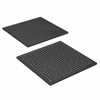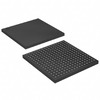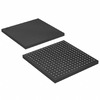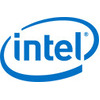Manufacturer Part Number
EP1K100FC484-1N
Manufacturer
Intel
Introduction
The EP1K100FC484-1N, part of Intel's ACEX-1K® series, is an FPGA (Field Programmable Gate Array) designed for embedding into various applications, offering reconfigurable logic for a wide range of uses.
Product Features and Performance
Advanced 0.22-micron, 5-layer metal CMOS technology.
Utilizes 624 logic array blocks (LABs) and 4992 logic elements/cells.
Features 49152 total RAM bits for data storage.
Provides 333 I/O pins for versatile connectivity.
Operates on a voltage supply of 2.375V to 2.625V.
Designed for surface mounting with a 484-BBGA package.
Compatible with 484-FBGA (23x23) device package for easy integration.
Offers a gate count of 257,000 for complex digital circuits.
Product Advantages
High logic density for space-constrained applications.
Significant memory and I/O resources support complex designs.
Low power consumption enhances application efficiency.
Easy to integrate into various systems with surface mount technology.
Key Technical Parameters
Number of LABs/CLBs: 624
Number of Logic Elements/Cells: 4992
Total RAM Bits: 49152
Number of I/O: 333
Voltage Supply: 2.375V ~ 2.625V
Operating Temperature: 0°C ~ 70°C (TA)
Quality and Safety Features
Manufactured using Intel's reliable 5-layer metal CMOS technology.
Designed for robust performance within a specified temperature range.
Compatibility
Flexible I/O structure compatible with various digital standards.
Application Areas
Ideal for telecommunications, automotive, consumer electronics, and industrial control systems.
Product Lifecycle
This product is classified as obsolete, indicating that it is nearing the end of its production lifecycle. Customers are advised to plan for replacement or upgrade solutions.
Several Key Reasons to Choose This Product
High performance and logic density suited for complex digital applications.
Backed by Intel's reputation for quality and reliability in semiconductor manufacturing.
Versatile application range, from automotive systems to industrial control units.
Though obsolete, its technical features continue to make it an attractive option for specific legacy applications.
Lower power consumption makes it suitable for power-sensitive projects.


 EP1K100FC256-2NIntelIC FPGA 186 I/O 256FBGA
EP1K100FC256-2NIntelIC FPGA 186 I/O 256FBGA EP1K100FC256-1Intel® FPGAsIC FPGA 186 I/O 256FBGA
EP1K100FC256-1Intel® FPGAsIC FPGA 186 I/O 256FBGA EP1K100FC256-1QAltera (Intel)
EP1K100FC256-1QAltera (Intel) EP1C6T144I8NALTEAR
EP1C6T144I8NALTEAR